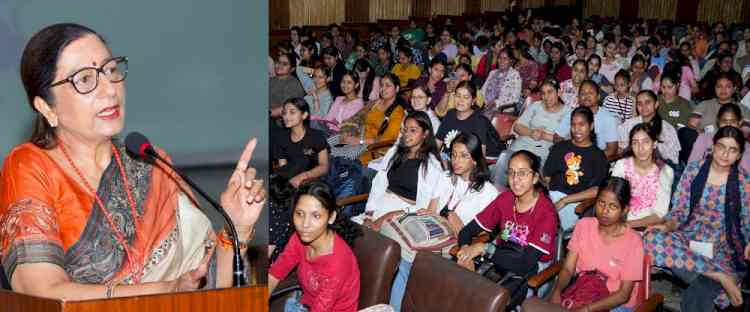Strategic juggling to ace in boards and competitive exams
It is important to understand the difference between the board exam and the competitive exams

by Ankit Kapoor, Managing Director - Pratham Test Prep
While the students have been put in a situation of dilemma due to swing between the preparation for the board exam or the competitive exams, it is evident that both are important in the present scenario of the on-going pandemic. It is not the first time when we have such a stressful situation, considering that the first quarter of every year is as stressful as the current one. Class 12th is the threshold to start building the foundation of a rewarding career ahead. The pressure of preparing for the board class and the competitive exams hovers over them. The pressure on the students is not only on the boards but also on the competitive exams as they want good marks on the mark sheet as well as they want to secure a good rank to get into a good college. This ensures a successful life ahead for them.
It is important to understand the difference between the board exam and the competitive exams and a smart student who understands this difference and shifts gears accordingly for preparation. Though juggling between the class XII and competitive exams is a herculean task, one should know that the Class XII has a specified syllabus in comparison to the entrance exam where their aptitude is put into test.
There is a dire need to build a strategic balance between both the exams in order to excel. Few Strategies that a student can follow to have a comfortable shift between the board exam and the competitive exams are:
a. Make a Time Table – While it seems easy to say to make a timetable but it is as difficult to follow it. Thus, every student needs to follow the set routine and revision plan accordingly. It is not advisable to make drastic changes in the pre-existing timetable at this hour as this can lead to difficulties in adjusting to the new regime. But at the same time systematic approach helps the students to understand the weaker sections providing a scope of improvement.
b. Attend Mock exams – In order to check their preparation levels students are advised to take regular mock tests which also assist in identifying the weak areas and focus level. Since the structure of both boards and competitive exams are way different, with Boards following a traditional pattern, while entrance follows the strategy of Multiple-Choice Questions. This practice will allow you to identify the basic and higher-level questions of a particular topic and subject overall.
c. Learn the art of Correlation – Overlapping of topics is one of the post probable outcomes while simultaneous preparation. It is important to identify such topics and cover at the earliest in order to segregate ample time to other important topics as well, which not only saves time but brings out positive results for both the exams.
d. Follow a stress-free pattern – A stress-free mind is the gateway to success, so any student should refrain from getting stressed about the exam. Instead try to find out time for recreational activities and rejuvenate the mind towards your goal. Meditation is one such thing that a student should inculcate in their daily activities.
e. Maintain a positive outlook – it is absolutely important to stay away from negative thought during the preparation. There are chances that people surrounding may feed in negative thoughts, distractions and panic. In such situations believe in yourself and have faith in the efforts you have put in during all these days of preparation.
A proper expert guidance is always essential for a student to concentrate on quality preparation and not on time spent during preparation. A calm mind always has a better chance to reach its destination. Avoid last-minute studying anything new. A student should also disrupt his/her sleeping pattern and should incorporate things like yoga and other activities to keep you happy.


 cityairnews
cityairnews 









